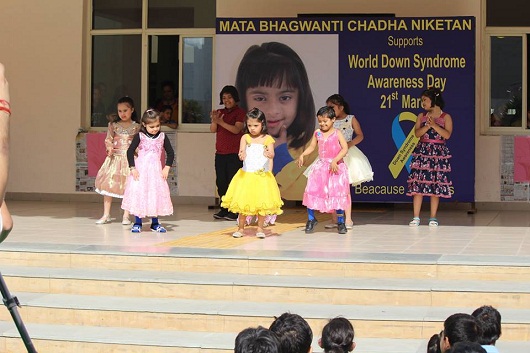Raising Awareness Around Down Syndrome
Raising Awareness Around Down Syndrome
 There are conditions which are known to all and then, there are ones which remain rare and unknown. One of these is Down Syndrome which is a genetic disorder caused by the presence of all or part of a third copy of chromosome 21. It is usually associated with physical growth delays, characteristic facial features, and mild to moderate intellectual disability. Having an extra or abnormal number of chromosome alters both the body and brain development.
There are conditions which are known to all and then, there are ones which remain rare and unknown. One of these is Down Syndrome which is a genetic disorder caused by the presence of all or part of a third copy of chromosome 21. It is usually associated with physical growth delays, characteristic facial features, and mild to moderate intellectual disability. Having an extra or abnormal number of chromosome alters both the body and brain development.
The condition may occur with every 1 out of 800 babies. The risk of having a child with Down Syndrome rises if the condition runs in the pedigree. It adds to the complications if the expecting mother is older than 35 years.Though, the best way to find out about the problem is by conducting a Karyotype Test on the blood sample taken from a newborn for chromosomal analysis. As far as the visible symptoms are concerned, the traits are visible in the physical features of a person.
Pay Attention to Symptoms
Children born with the condition generally have a flat face, outwardly slanting eyes, small ears and mouth and partly sticking out tongue. They also have loose joints, short limbs and neck, along with low muscle tone and below average intelligence. The condition may also hamper the cognitive and social skills and the situation may aggravate during their growing up years.As a baby, each child can have delayed development milestones like late standing, sitting, walking and talking.But the intellectual disabilities related with Down Syndrome, can differ from person to person, being mild to moderate.
Therapies and Special Education
Though, the problem cannot be eradicated, its effect can be reduced to a great extent through therapies and education. Not to worry as the child only needs special education, occupational therapy and physiotherapy to deal with the aforementioned issues.3 years onwards, early intervention programmes are recommended for a good start. Early intervention starts with consulting the paediatric physiotherapists or occupational therapists and special educators.
During infancy, operational therapists are needed to solve the oral motor feeding issues that occur due to hypotonia (floppiness of the muscles owing to the reduced muscle tone). The situation can be explained as the weakening of muscles of tongue, cheeks and lips that make feeding difficult for infants.Occupational therapy suggests the best positioning and feeding methods as an alternative.
Rehabilitation and Occupational Therapy
The occupational therapists work with physiotherapists to facilitate the Down Syndrome affected children with the motor milestones like crawling and walking. They stimulate hand and arm movements in kids who may achieve mobility through playing and picking up things of varying shapes and sizes. Also, they learn to stack and build, experiment with crayons while holding, opening and closing things.A child may squeeze things too hard or drop toys a lot, making sensory integration therapynecessary. This way, they learn to balance, touch, taste and smell the right way.
They are also assisted in sharpening fine and gross motor skills, as well as tips for self-care. After three years of age, a differently-abled child can be given special education till he or she turns 18. Teenagers and adults are further rehabilitated through occupational therapy that renders them the necessary job skillsfor an independent life.
In this way, rehabilitation, inclusion and integration are the suitable cures for Down Syndrome. Apart from this, we all, in general, need to develop an all embracing, impartial attitude towards the patients. The feeling of shared normalcy and appreciation can boost them like nothing else. Ending on a beautiful thought by Yvonne Pierre.
“When you focus on someone’s disability you’ll overlook their abilities, beauty and uniqueness. Once you learn to accept and love them for who they are, you subconsciously learn to love yourself unconditionally.”
